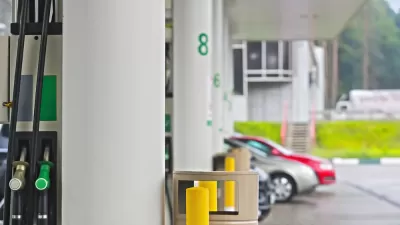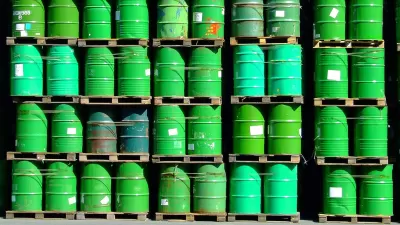A decision earlier this month by a group of the world's largest oil exporters to drastically reduce oil production to stem the decline in oil prices could be a ‘tipping point’ for a global recession, says the International Energy Agency.

“Saudi Arabia and Russia, acting as leaders of the OPEC Plus energy cartel, agreed on Wednesday to their first large production cut in more than two years in a bid to raise prices, countering efforts by the United States and Europe to choke off the enormous revenue that Moscow reaps from the sale of crude,” reported London-based Stanley Reed for The New York Times on October 5.
The cut of two million barrels a day represents about 2 percent of global oil production.
By reducing output, OPEC Plus was also seeking to make a statement to energy markets about the group’s cohesion during the Ukraine war and its willingness to act quickly to defend prices, analysts say.
OPEC Plus?
According to the BBC on October 5, the expanded energy cartel “is a group of 23 oil-exporting countries which meets regularly to decide how much crude oil to sell on the world market.”
At the core of this group are the 13 members of Opec (the Organisation of Oil Exporting Countries), which are mainly Middle Eastern and African countries. Opec was formed in 1960 as a cartel, with the aim of fixing the worldwide supply of oil and its price.
In 2016, when oil prices were particularly low, Opec joined forces with 10 other oil producers to create Opec+.
Nasdaq, the NY-based American stock market exchange, indicates on Aug. 3 that there are 11 other non-OPEC members in the cartel (making for a total of 24) and details the top 5 in terms of proven oil reserves, respectively: Russia, Kazakhstan, Azerbaijan, Mexico and Oman.
OPEC holds 80.4% of the world’s proven oil reserves, while the set of 11 non-OPEC nations represent 9.7% of proven oil reserves. With 90% of the world’s proven crude oil reserves held by these nations, they have the capability to disrupt or enhance the supply of crude oil.
“Together, these nations produce about 40% of all the world's crude oil,” adds the BBC.
“Opec+ tailors supply and demand to balance the market,” says Kate Dourian, of the Energy Institute. "They keep prices high by lowering supplies when the demand for oil slumps."
Global Recession?
Rachel Frazin, an energy and environment reporter for The HIll, reported on Oct. 13 (in the source article) on the warning issued by the Paris-based International Energy Agency (IEA), a group of 31 countries formed in 1974 in response to the 1973 oil embargo.
“The OPEC+ bloc’s plan to sharply curtail oil supplies to the market has derailed the growth trajectory of oil supply through the remainder of this year and next, with the resulting higher price levels exacerbating market volatility and heightening energy security concerns,” the organization said in its new oil market report.
“With unrelenting inflationary pressures and interest rate hikes taking their toll, higher oil prices may prove the tipping point for a global economy already on the brink of recession,” it continued.
The IEA oil report notes that the actual reduction in the oil output by the expanded cartel will be about half of what was announced on October 5.
The decline in OPEC+ supply will be smaller than the announced 2 mb/d reduction in production targets, with the majority of the alliance’s members already producing well below their ceilings due to capacity constraints. Our current estimate is for a decrease of around 1 mb/d in OPEC+ crude oil output from November, with the bulk of the cuts delivered by Saudi Arabia and the UAE.
Is It Working?
As for the effect on oil prices, the OPEC+ move does not appear to be working. “Crude oil prices continued their fall on Tuesday, with WTI [West Texas Intermediate] now dipping to levels not seen since before the OPEC+ meeting,” reports Julianne Geiger for Oilprice.com on Oct. 18.
The November contract for WTI crude fell to $83.22 per barrel on Tuesday afternoon—sliding 2.64% from Monday. The last time WTI was this low was days before OPEC+ met, when the group decided to cut 2 million barrels per day from its production targets starting in November.
Similarly, Tom Kool reports for Oilprice.com on Oct. 18 that the price of Brent crude has fallen “below $90 per barrel on global recession fears.” Far from causing a global recession, it would appear that the OPEC+ move was made in anticipation that the world is headed in that direction.
Hat tip to The Hill's Energy & Environment newsletter, October 13, 2022.
Related:
- Is $7 a Gallon for Gas on the Horizon? July 28, 2022
FULL STORY: OPEC+ cuts could be ‘tipping point’ for recession, global energy agency warns

Study: Maui’s Plan to Convert Vacation Rentals to Long-Term Housing Could Cause Nearly $1 Billion Economic Loss
The plan would reduce visitor accommodation by 25,% resulting in 1,900 jobs lost.

North Texas Transit Leaders Tout Benefits of TOD for Growing Region
At a summit focused on transit-oriented development, policymakers discussed how North Texas’ expanded light rail system can serve as a tool for economic growth.

Using Old Oil and Gas Wells for Green Energy Storage
Penn State researchers have found that repurposing abandoned oil and gas wells for geothermal-assisted compressed-air energy storage can boost efficiency, reduce environmental risks, and support clean energy and job transitions.

Private Donations Propel Early Restoration of Palisades Playground
Los Angeles has secured over $1.3 million in private funding to restore the Pacific Palisades playground months ahead of schedule, creating a modern, accessible space that supports community healing after recent wildfires.

From Blight to Benefit: Early Results From California’s Equitable Cleanup Program
The Equitable Community Revitalization Grant (ECRG) program is reshaping brownfield redevelopment by prioritizing projects in low-income and environmental justice communities, emphasizing equity, transparency, and community benefits.

Planting Relief: Tackling Las Vegas Heat One Tree at a Time
Nevada Plants, a Las Vegas-based nonprofit, is combating the city’s extreme urban heat by giving away trees to residents in underserved neighborhoods, promoting shade, sustainability, and community health.
Urban Design for Planners 1: Software Tools
This six-course series explores essential urban design concepts using open source software and equips planners with the tools they need to participate fully in the urban design process.
Planning for Universal Design
Learn the tools for implementing Universal Design in planning regulations.
Ascent Environmental
Borough of Carlisle
Institute for Housing and Urban Development Studies (IHS)
City of Grandview
Harvard GSD Executive Education
Toledo-Lucas County Plan Commissions
Salt Lake City
NYU Wagner Graduate School of Public Service





























